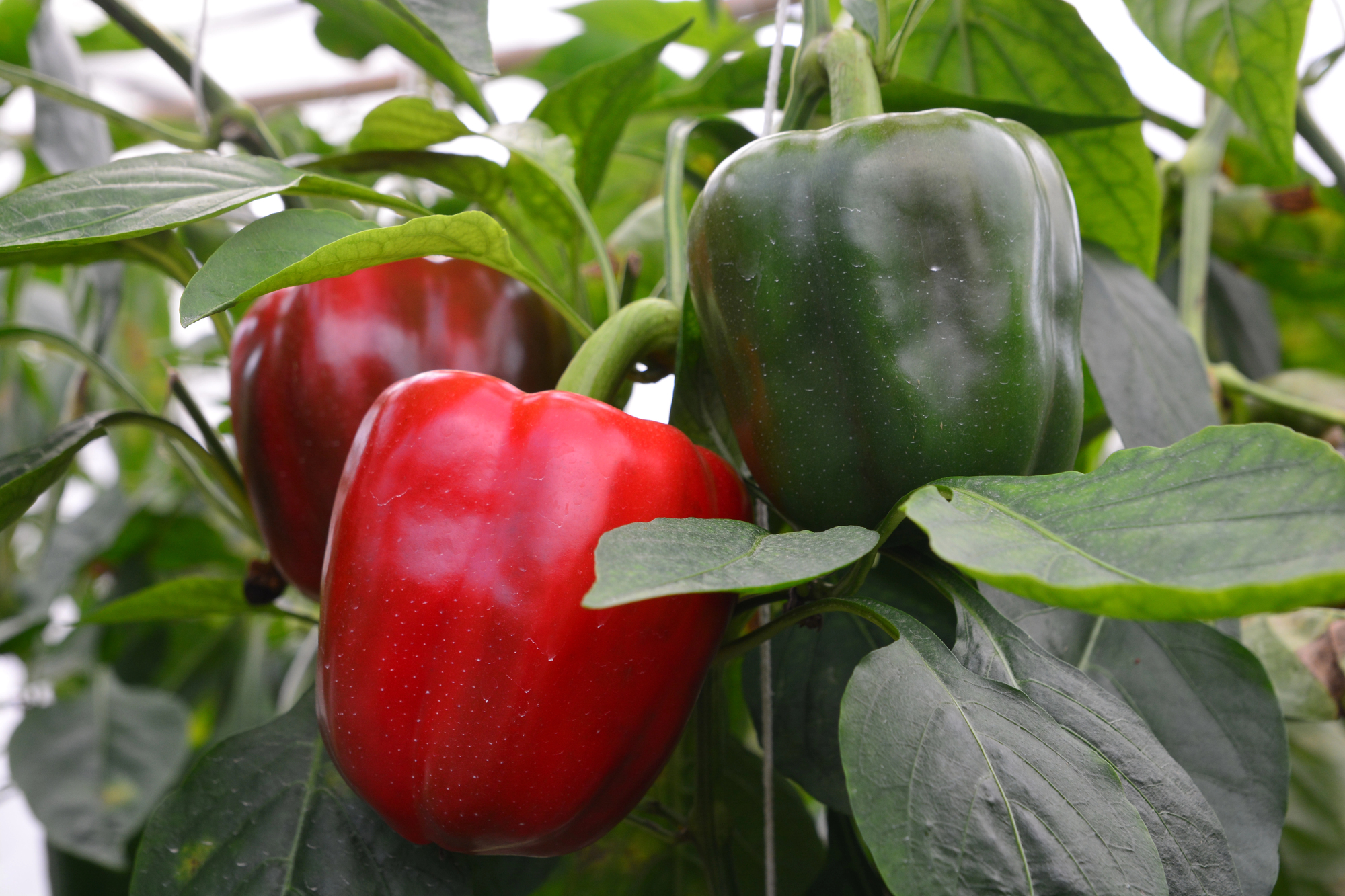Pepper Donation Tracker
Quick Links: How & Where to Grow | Temperature | How to Care For | Harvest Signs | Harvesting | Pruning | Pests | Companions | Varieties | Preservation | Michigan Tips | Fun Facts
🌱 How & Where to Grow Peppers:
- Start 8-10 weeks before frost – peppers need the longest indoor start time!
- Transplant when soil reaches 65°F (early June in SE Michigan).
- Space plants 18-24 inches apart in rows 24-36 inches apart.
- Sunlight: Full sun (8+ hours) essential for fruit production.
- Soil Type: Well-drained, fertile soil with pH 6.0-6.8.
- Soil Amendment: Add compost and calcium to prevent blossom end rot
Pro tip: Peppers are even more cold-sensitive than tomatoes – patience with transplanting pays off!
🌡️ Temperature Guidance:
Minimum 65°F soil. Nights above 55°F. Very cold-sensitive.
- Transplanting: Wait for consistent 65°F soil and 60°F nights.
- Growing: Optimal growth at 70-80°F days.
- Growth stops below 55°F – stunting can be permanent.
- Flowers drop if nights are below 60°F or days above 90°F.
Michigan’s cool springs mean June transplanting is safer than rushing in May!
💧 How to Care for:
- Consistent Moisture: Critical during flowering and fruiting.
- Watering: 1-2 inches weekly – consistent moisture prevents blossom drop.
- Mulch: Black plastic mulch warms soil and conserves moisture.
- Fertilizer: Feed every 2 weeks once fruiting begins.
- Support: Stake or cage all plants – heavy fruit can break branches.
📏 Harvest Signs:
Full color development. Firm, glossy skin. 60-90 days from transplant.
- All peppers start green and develop their final color when ripe.
- Can harvest green or wait for full color (red, yellow, orange, etc.).
- Ripe peppers are sweeter and more nutritious than green.
- Slight give when gently squeezed indicates ripeness.
Frequent harvesting encourages more fruit production – pick often!
🧺 Harvesting:
Cut stem with knife. Harvest regularly for production.
- Always cut, don’t pull – pulling can damage the plant.
- Leave short stem attached to pepper for better storage.
- Harvest before frost – even mature green peppers are useful.
- Morning harvest when peppers are crisp and cool.
- Handle hot peppers with gloves to avoid burning skin.
✂️ Pruning:
Remove first flowers. Top late in season. Minimal pruning needed.
- Pinch first flowers until plants are 8-10 inches tall for stronger plants.
- Remove suckers below first fork for better airflow.
- Top plants 4-6 weeks before frost to ripen existing fruit.
- Remove damaged or diseased leaves promptly.
- Otherwise minimal – peppers don’t need heavy pruning like tomatoes.
🪲 Michigan Pests:
Bacterial spot, aphids, cutworms, blossom end rot.
- Bacterial spot – major issue in humid weather. Choose resistant varieties.
- Aphids – check undersides of leaves, blast off with water.
- Cutworms – use collar barriers around transplants.
- Blossom end rot – maintain consistent watering and add calcium.
🫱🏽🫲🏼 Companions:
Tomatoes, basil, oregano, carrots. Marigolds beneficial.
- Tomatoes share similar growing needs and care.
- Basil and oregano may improve pepper flavor.
- Carrots grow well between pepper rows.
- Marigolds deter aphids and other pests.
- Avoid fennel and members of the brassica family.
🌶️ Varieties:
Sweet: ‘King Arthur’, ‘Carmen’. Hot: ‘Hungarian Hot Wax’, ‘Jalapeño’.
- Sweet bells: ‘King Arthur’, ‘Carmen’ – early and disease resistant.
- Small sweet: ‘Lunchbox’, ‘Jimmy Nardello’ – earlier maturing.
- Hot: ‘Hungarian Hot Wax’, ‘Early Jalapeño’ – reliable in short seasons.
- Very hot: ‘Cayenne’, ‘Thai Dragon’ – prolific producers.
- Michigan reliable: Choose early varieties (65-75 days).
🫙 Preservation:
Freeze without blanching. Dry whole or sliced. Pickle. Ferment.
- Freezing: Easiest method – wash, dry, freeze whole or chopped.
- Drying: String whole small peppers or use dehydrator for slices.
- Pickling: Hot or sweet peppers pickle beautifully.
- Fermenting: Make hot sauce or fermented pepper mash.
- Roasting and freezing: Char, peel, and freeze for amazing flavor.
- Pepper jelly: Sweet-hot condiment using any pepper type.
✋🏼 Michigan Tips:
- Black plastic mulch is helpful.
- South-facing walls are best.
- Early varieties are essential.
- Start seeds by March 1 for strong transplants.
- Use Wall O’ Water or row covers for early transplanting.
- Sweet peppers are more reliable than hot in cool summers.
- Container growing allows moving to warmest spots.
🧠 Fun Facts:
- Capsaicin in seeds/membranes.
- Michigan’s perfect for sweet peppers.
- Bell peppers have the most vitamin C of all peppers when red.
- Hot pepper heat measured in Scoville units – bell peppers are 0!
- Birds can’t taste capsaicin – they spread wild pepper seeds.
- Pepper spray is literally made from hot peppers.
- Columbus misnamed them “peppers” thinking they were related to black pepper.
- The hottest pepper changes yearly – currently Carolina Reaper at 2.2 million Scoville!


0 Comments